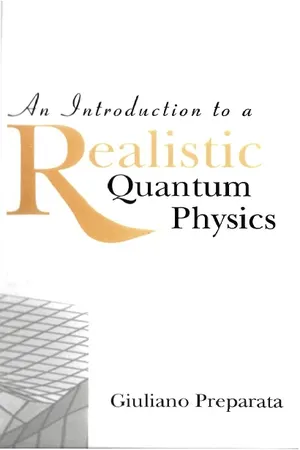
- 84 pages
- English
- PDF
- Available on iOS & Android
Introduction To A Realistic Quantum Physics, An
About this book
This book is a remarkable synthesis, a clear and simple introduction to Quantum Physics with a sort of Galilean dialogue on the supreme systems of contemporary Physics. The author, whose research interests and work extended from quarks to liquid systems and from crystals to stars, introduces the common conceptual and mathematical framework of all quantum theories, realistic enough to successfully confront Nature: Quantum Field Theory applied to the study of both dilute and condensed matter. In the dilute limit, quantum mechanics is shown to be a good approximation to Quantum Field Theory. However, in condensed matter physics the problem of the ground state, which acts as a kind of template for physical reality, is studied under the hypothesis that the standard perturbative vacuum is unstable with respect to a new coherent vacuum, whose spectrum emerges quite naturally through a simple variational procedure.
Frequently asked questions
- Essential is ideal for learners and professionals who enjoy exploring a wide range of subjects. Access the Essential Library with 800,000+ trusted titles and best-sellers across business, personal growth, and the humanities. Includes unlimited reading time and Standard Read Aloud voice.
- Complete: Perfect for advanced learners and researchers needing full, unrestricted access. Unlock 1.4M+ books across hundreds of subjects, including academic and specialized titles. The Complete Plan also includes advanced features like Premium Read Aloud and Research Assistant.
Please note we cannot support devices running on iOS 13 and Android 7 or earlier. Learn more about using the app.
Information
Table of contents
- Contents
- Preface
- 1. The Fads and Fallacies of Quantum Mechanics
- 2. Kinematics: The Descriptive Framework of Physical Reality
- 3. Dynamics: The Laws of Evolution of Physical Reality
- 4. Quantum Field Theory: The Only Realistic Theory of the Quantum World
- 5. Final Considerations
- Appendix
- Bibliography